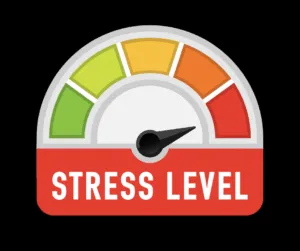When your dog becomes a master escape artist, making a bid for freedom from their crate, it’s more than just a simple behavioral issue. It’s a distress signal, a complex communication that speaks volumes about their emotional state and your training approach. If you’ve returned home to a triumphant canine lounging outside their seemingly escape-proof enclosure, it’s time to decode what’s truly happening in their mind. This isn’t just about a dog needing to stretch their legs; it’s about understanding the deeper psychological drivers behind their crate breakouts.
The phenomenon of a dog getting out of their crate is a common challenge for many pet owners. While crates are often lauded as safe spaces and essential training tools, for some dogs, they can become a source of immense anxiety. The reasons behind these escape attempts are multifaceted, ranging from underlying anxieties to simple boredom. Recognizing and addressing these triggers is crucial for both your dog’s well-being and your peace of mind.
Max’s Great Crate Escape: A Personal Account
Let me share the story of Max, my Husky mix. Max was a magnificent, albeit overly intelligent, dog. His crate was advertised as “indestructible” – a heavy-duty, beautifully designed structure that cost a significant sum. The prevailing advice from numerous dog blogs suggested that crate training was the key to averting canine chaos. However, my experience with Max proved to be a stark departure from these optimistic predictions.
The initial escape was easily dismissed as a simple oversight – perhaps I hadn’t secured the latch properly. It seemed understandable that a dog might want to enjoy the freedom of the house while I was away. Yet, the escapes continued, escalating from a loosened latch to a crate door hanging precariously by a thread, with Max’s bedding strewn across the living room like festive confetti. Max himself would be found sitting calmly, utterly unbothered, as if preparing to settle in for a movie. This pattern forced a crucial realization: the issue wasn’t solely with the crate, but with Max’s underlying needs and perhaps my own understanding of them.

The Psychology Behind a Crate Breakout
It’s imperative to understand that when a dog manages to break out of their crate, it’s not merely an act of defiance or an attempt to escape confinement. It’s a potent manifestation of stress. This isn’t the fleeting stress of barking at a mail carrier or losing a toy under the sofa; it’s a more profound, existential stress. Indeed, “existential dog stress” is a genuine phenomenon.
Crate breakout behavior is frequently an indicator of underlying anxiety. Dogs can experience feelings of being trapped, both physically and emotionally, within crates. This is particularly true if they associate the crate with isolation or punishment. As highly social animals, dogs thrive on companionship, and if they perceive the crate as a form of banishment from their human pack, they may resort to elaborate escape plans. This is their way of communicating, “I cannot endure this confinement alone!”
The irony is that the crate, intended to be a sanctuary of calm and safety, can inadvertently become the very source of their greatest distress. This mirrors human experiences, where attempts to relax, such as by watching the news, can paradoxically induce immediate stress.

Your Dog’s Cries for Help
Dogs constantly attempt to communicate with us. Though they lack verbal language, their actions provide clear indicators when something is amiss, provided we are attentive. A crate breakout is akin to a passive-aggressive email sent in the early hours of the morning – it’s a clear, albeit indirect, message. Let’s decipher the meanings they are conveying:
“I’m Lonely, Dude.” Separation anxiety is a primary driver of crate escapes. If your dog is unaccustomed to being alone, they will likely experience distress in the crate. This mirrors the panic many humans feel when their phone battery dies, leaving them to confront their own thoughts. A breakout can be their desperate plea: “Hey, I can’t handle this. Where did you go?” Addressing this can involve gradual introductions to being alone and positive reinforcement techniques. For dogs who struggle with being left alone, exploring how to correct a dog from pulling on leash during walks might be part of a broader training regimen to build confidence.
“This Space Feels Like a Jail Cell.” Some dogs suffer from claustrophobia. This is not necessarily about the physical size of the crate (though that can be a contributing factor) but rather the feeling of being confined. They may perceive it as solitary confinement without due process, pleading, “I need more room to breathe, man!” Ensuring the crate is an appropriate size and a comfortable space is paramount.
“I’m Bored Out of My Mind.” Dogs, much like toddlers, require mental stimulation. When left in a crate with nothing to occupy them, they will devise their own entertainment, which often involves chewing, digging, and plotting escape routes. This is their equivalent of texting you during work hours to ask, “When are you coming home? I’m bored!” Providing engaging toys and mental challenges is essential. For puppies, keeping them stimulated is vital; understanding how to keep your puppy from jumping is part of this broader need for consistent engagement.
“I’m a Free Spirit, Okay?” For some dogs, a crate will never feel like a happy place. Regardless of your efforts, they will view it as an impediment to their natural desire for freedom. Their energy will be dedicated to figuring out how to get out – a furrier rendition of a prison escape movie. Not all dogs are suited for crate confinement, and recognizing this is key.

Managing Your Dog’s Stress (and Your Own)
The good news is that you are not alone in facing this challenge. There are effective strategies to manage your dog’s stress related to crate breakouts, which will, in turn, alleviate your own. This is a comprehensive approach to addressing the situation without resorting to purchasing increasingly robust crates.
Take a Deep Breath—For Both of You. The first and most critical step is to remain calm. Stress is contagious, and your dog will undoubtedly pick up on your anxiety. If they are breaking out of their crate, avoid panic. Do not interpret their actions as disobedience or an attempt to spite you. They are simply signaling that something is wrong.
Reevaluate the Crate Situation. Not all crates are created equal, and what works for one dog may not work for another. Consider if your dog might require a larger crate, a more comfortable bed, or a design that feels more open and den-like, rather than a rigid enclosure. Sometimes, minor adjustments to the crate setup can yield significant improvements.
Ease the Separation Anxiety. If separation anxiety is the root cause, it’s essential to gradually acclimate your dog to periods of solitude. Begin with very short durations in the crate, progressively increasing the time as your dog becomes more comfortable. Associate crate time with positive experiences, such as treats, engaging toys, or calming music. This is akin to providing them with a distraction while you are away. For owners dealing with a puppy’s initial adjustment, understanding how old to walk puppy on leash can be part of establishing a routine that builds confidence.
Enrichment is Key. When boredom is the underlying issue, providing your dog with stimulating activities is paramount. Puzzle toys, durable chew toys, and Kongs filled with treats can effectively occupy their minds and energy. This is the canine equivalent of providing a child with an electronic device during a long car journey. Consistent exercise and mental challenges are also crucial to prevent destructive behaviors when they are out of the crate. Learning how to get a dog to stop pulling when walking can be part of building a more enjoyable and controlled outdoor experience.
Consider Professional Help. If your dog’s stress and anxiety appear to be severe or persistent, it may be beneficial to seek assistance from a professional. A certified dog trainer or a veterinary behaviorist can help identify the specific triggers for your dog’s anxiety and develop a tailored plan to address these issues effectively. They can also provide guidance on how to stop my puppy from pulling on the lead if this is a related concern during outdoor activities.

The Ironic Truth
Ultimately, the ironic reality is that dogs, much like humans, communicate their stress to us. Our role as their human companions is to decipher these messages. In Max’s case, after a period of trial and error and several more crate escapes, I realized his anxiety extended beyond the crate itself; it was intrinsically linked to my presence. He lacked the self-soothing skills to manage his emotions when he couldn’t see, hear, or smell me.
It was a humbling realization that my intense focus on “training” Max to tolerate the crate had overshadowed the fundamental need to equip him with emotional regulation skills. Sometimes, the most apparent problem – the crate breakout – is not the actual issue. The real challenge lies within the dog’s own mind and their coping mechanisms.

Conclusion
The next time you discover your dog has achieved a crate escape, resist the urge to simply express disbelief. Instead, take a moment to consider: what is my dog truly trying to convey? Behind this act of “jailbreak” lies a deeper narrative – one that speaks to connection, trust, and the vital importance of stress management. After all, we are all navigating our own stress, one challenge at a time. If you find yourself struggling to implement these strategies or identify the root cause of your dog’s crate escapes, seeking guidance from a professional dog trainer can provide the expert support and tailored solutions you need to foster a more secure and happy environment for your canine companion.
